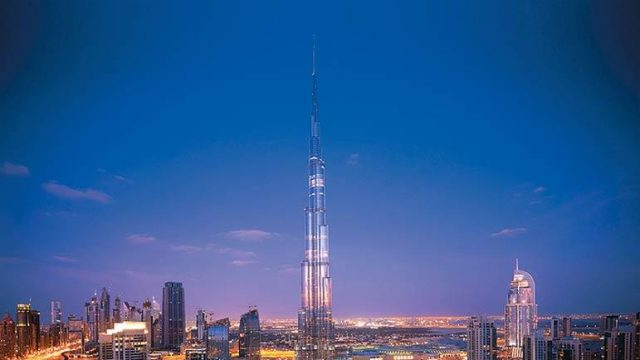Its crushing national debt and recessionary economy didn’t get in the way of Dubai’s big celebration last month: the opening of a 2,717-foot skyscraper — the world’s tallest — on January 4. Or maybe reality did taint the dream a little; because, on the night of the opening, Burj Dubai was abruptly renamed Burj Khalifa, after the president of the UAE, Sheikh Khalifa bin Zayed al-Nahyan. Clearly, an acknowledgement of the UAE’s $10 billion bailout of Dubai. But Emaar Properties, which is behind the Burj Khalifa, is very upbeat. It has even tied up with Giorgio Armani to develop hotels, in cities like New York, London and Tokyo. The first Armani hotel opens at the Khalifa on March 18.
Meanwhile, the Burj Khalifa stands alone: it has the highest swimming pool, and the highest mosque; it is said to have used enough glass to cover 17 football fields, and aluminium that would weigh as much as five A380 airplanes. Apparently, if you were to lay out the gaskets it uses end-to-end, it would cover the length from Dubai to Damascus. The building has 206 floors; the 124th floor houses ‘At the Top’, the world’s highest observatory.
For Dubai, it’s always been like this: palm-shaped islands, indoor ski slope, the largest mall and now the tallest building. Soon, if all goes as planned, it will also have the world’s largest airport, Dubai World Central-Al Maktoum International



